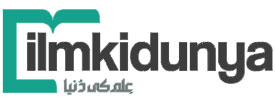-
 Home
Home
-
 News
News
Latest Educational News Stories
Daily update of all national, international news, picture stories, college / university announcements and educational events.
-
 Colleges
Colleges
Pakistan's Largest Database of Colleges and Universities
Explore Largest Directory of Private and Govt. Colleges, Universities and find best institute for your future Education.
-
 Courses
Courses
-
 Admission
Admission
-
 Lectures
Lectures
-
 Online Test
Online Test
Short Question
- 9th Class Physics Short Questions
- 9th Class Chemistry Short Questions
- 9th Class Math Short Questions
- 9th Class Biology Short Questions
- 9th Class Computer Short Questions
- 9th Class English Short Questions
- 10th Class Physics Short Question
- 10th Class Chemistry Short Question
- 10th Class Math Short Question
- 10th Class Biology Short Question
- 10th Class Computer Short Question
- 10th Class English Short Question
-
 Past Papers
Past Papers
-
 Date Sheets
Date Sheets
-
 Results
Results
Exam Results 2024
Check online Results 2024 Matric Inter BA BSc B.Com MA MSc M.Com CSS PCS MCAT ECAT of all educational boards and universities in Pakistan
-
 Study Abroad
Study Abroad
Study Abroad Programs and Opportunities for Pakistani Students
Explore free study abroad search to find programs, consultants, events to study in USA, UK, Australia, China, Malaysia and many others.
-
 Jobs
Jobs
-
 Tutors
Tutors
-
 More
More
-
 Apps
Apps
This online test contains MCQs about following topics:
Determination of Market Pice ,Changes in Demand and Supply Cinditions ,Market Price ,Normal Price
MCQ's Test For Chapter 6 "Economics Ics Part 1 English Medium Chapter 6 Online Test"
Try The MCQ's Test For Chapter 6 "Economics Ics Part 1 English Medium Chapter 6 Online Test"
-
Total Questions20
-
Time Allowed30
Question # 1
In case of a fall in supply.
Question # 2
Market equilibrium means
Question # 3
In market equilibrium, supply is vertical line. The downward sloping demand curve shifts to the right. Then
Question # 4
A change in price brings in quantity supplied. it will be.
Question # 5
Equilibrium
Question # 6
Ten rupees is the equilibrium price for good Z. If govt. fixes price at Rs. 5, there is
Question # 7
When the supply curve of a product is parallel to the vertical axis, it would mean that;
Question # 8
Perfectly inelastic supply curve is:
Question # 9
When price is fixed below equilibrium level, there will be
Question # 10
A fall fall in supply will take place due to a:
Question # 11
With an increase in cost of production, price of the product rises while supply of the product will.
Question # 12
Markets where firms supply goods and services demanded by households are
Question # 13
If equilibrium price rises but equilibrium quantity remains unchanged, the cause is
Question # 14
The price and sales of sugar both increase. What could be the cause of this?
Question # 15
Market equilibrium means a situation where
Question # 16
If we know that quantities bought and sold are equal, we can conclude that
Question # 17
Which one will be termed as supply of a product.
Question # 18
Price of a product is determined in a free market
Question # 19
If price is set above equilibrium level, there will be
Question # 20
When demand is perfectly elastic, an increase in supply will result in
ICS Part 1 Economics Chapter 6 MCQs Test
Top Scorers Of Chapter 6 "Economics Ics Part 1 English Medium Chapter 6 Online Test" MCQ`s Test
-
A Anum Fatima 19 - Jun - 2023 00 Min 08 Sec 20/20 -
R romana 16 - Apr - 2021 20 Min 40 Sec 20/20 -
J javeria naeem 12 - Aug - 2018 04 Min 15 Sec 19/20 -
U Unknown 02 - Aug - 2018 04 Min 59 Sec 19/20 -
H Hanif Wazir 30 - May - 2022 06 Min 36 Sec 19/20 -
T Tanzeela saeed 14 - Dec - 2020 04 Min 01 Sec 18/20 -
R romana 31 - Aug - 2018 17 Min 20 Sec 18/20 -
M Maheen 19 - Feb - 2021 04 Min 46 Sec 17/20 -
S Sharika usmani 08 - Jul - 2021 22 Min 50 Sec 17/20 -
M M.Attiq-U-Rehman 24 - Nov - 2023 04 Min 28 Sec 16/20 -
Z Zaina Ch 10 - May - 2024 02 Min 07 Sec 15/20 -
M Muhammad umer 28 - Sep - 2018 11 Min 05 Sec 14/20 -
N nachiketa sharma 13 - Dec - 2020 13 Min 15 Sec 14/20 -
L Laiba Muqaddas 26 - Jul - 2024 04 Min 41 Sec 13/20 -
N nazakat hussain 22 - Apr - 2019 05 Min 35 Sec 13/20
ICS Part 1 Economics Chapter 6 Important MCQ's
| Sr.# | Question | Answer |
|---|---|---|
| 1 | Demands and supply curves cross at |
A. always at 60 degree
B. at 90 degree
C. at equal angle
D. at any angle
|
| 2 | Market equilibrium means |
A. number of buyers and sellers are equal
B. demand and supply of commodity are equal
C. no price is changing
D. prices rise very slowly
|
| 3 | When demand is perfectly elastic, an increase in supply will result in |
A. decrease in quantity sold
B. increase in quantity sold
C. fall in price
D. b and c above
|
| 4 | A producers has one thousand tons of rice to be offered for sale at a certain price in future, it will be called. |
A. Supply of output
B. Production
C. Buffer stock
D. Stock
|
| 5 | A decrease in demand causes the equilibrium price to |
A. rise
B. fall
C. remain constant
D. indeterminate
|
| 6 | Which one will be termed as supply of a product. |
A. One tone potato in cold storage
B. One ton rice offered for sale in market
C. One ton rice brought for sale in market at a certain price.
D. None of the three
|
| 7 | Markets where firms supply goods and services demanded by households are |
A. factor market
B. product market
C. open markets
D. resource markets
|
| 8 | When there is big change in quantity supplied resulting from a minor change inits price,its elasticity of supply will be. |
A. Equal to unity
B. Less than unity
C. Equal to zero
D. Greater than unity
|
| 9 | Price of a product is determined in a free market |
A. by demand for the product
B. by supply of the product
C. by both demand and supply
D. by the government
|
| 10 | Demand and supply forces determine market price |
A. only in perfect competition
B. only in monopoly market
C. in both markets
D. none of the above
|


















